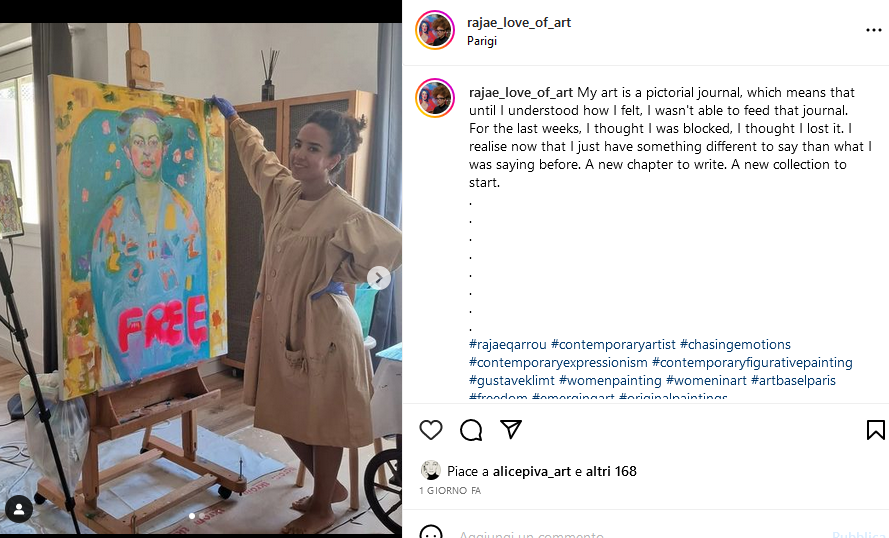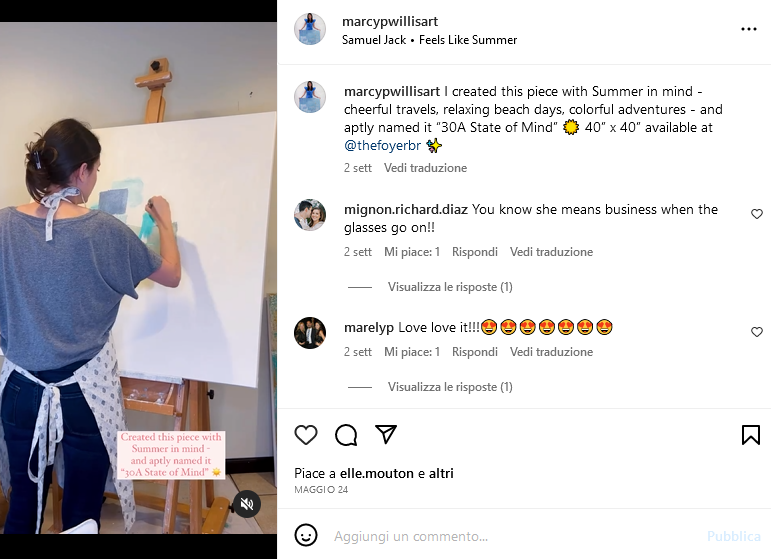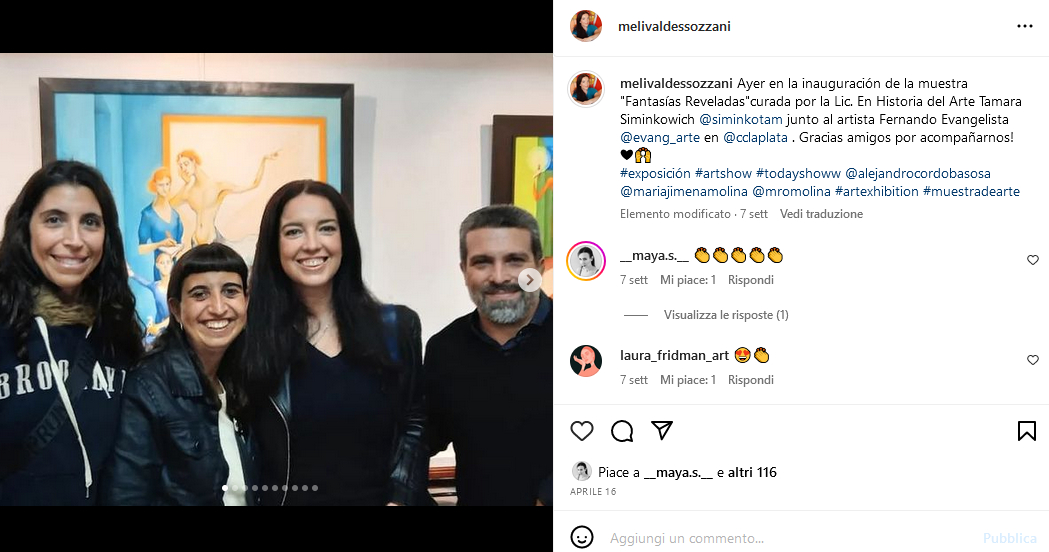Tell Stories to Grow Your Art Brand: Five Effective Strategies
How often have you wondered, “How do I promote my art brand?”.
With the plethora of suggestions you find on the web, it’s hard to pick the solution that fits best for your business. 😩
But don’t despair!
One surefire way to overcome this and scale online is to tell stories to grow your art brand.
With alluring brand stories, you enhance your presence in the art world and set the basics for lasting, quality relationships with your dream audience.
A study by Headstream confirms that “if people love a brand story, 55% are more likely to buy the product in the future, 44% will share the story, and 15% will buy the product immediately.”
Also, the human mind is 22x more likely to remember facts when they’re part of a story - meaning your influence would expand dramatically through compelling, original content!
But how do you sell a brand by telling a story? And what is good brand storytelling?
In today’s post, you’ll get all your questions answered.
From discovering the importance of ideating engaging stories to leveraging authentic narratives catered to your audience’s needs, you’ll learn five content marketing tactics for remarkable storytelling.
Ready to amplify your visibility with high-converting tales?
Let’s dive in!
Tell Stories to Grow Your Art Brand - Table of Contents
The Importance of Brand Storytelling
Five Key Tactics to Tell Stories That Grow Your Art Brand
FAQs - Tell Stories to Grow Your Art Brand
The Importance of Brand Storytelling
Does brand storytelling work?
The quick answer is YES!
Brand storytelling is the art of creating captivating stories that speak to the audience, hooking them on an emotional level and, ultimately, turning them into loyal customers and fans.
In a crowded digital landscape where everyone vies for attention, sharing a well-crafted story is the differentiation factor that helps you stand out and build trust.
With it, you experience:
Better engagement: people are more motivated to consume and engage with your content (telling a personal story about your artist’s work, for example, could lead to increased social media shares, comments, and likes).
Increase in sales: you generate sales from the authentic connections you create with prospects.
Better customer loyalty: you showcase your personality and vision, fostering a community of brand ambassadors willing to buy from you over time.
To make a brand story strong and impactful, make sure to:
Thoroughly understand your audience’s needs and desires (conducting market research or surveys is highly recommended here).
Create personas to better visualize the type of person who’ll benefit the most from your offers (base your buyer persona on relevant data like demographics, interests, and pain points).
Stay true to your brand values when crafting your story (be honest about your journey as an art professional and what drives you creatively).
Combine stories with appealing images or videos describing the ideation process behind your artworks (you’ll trigger an emotional response and stick into your audience’s minds).
Make your storytelling consistent across all your content distribution channels - from social media platforms to blogs, newsletters, and website.
Brand storytelling is an essential component of any successful art business' content marketing plan - use it purposely to tell stories that grow your art brand!
Five Key Tactics to Tell Stories That Grow Your Art Brand
Effective messaging requires thoughtful narratives that humanize your brand and nurture genuine interactions with audiences.
By incorporating the following five tactics into your content writing, you’ll:
Forge stories reflecting unique aspects of your artistic journey.
Evoke emotions.
Inspire action among your readers.
Let’s begin!
1. Draw Inspiration from Personal Journeys and Challenges
One of the most powerful ways to bond with your audience is to share personal stories.
When talking about your mission, achievements, or obstacles in your career, you let people know who you really are and what motivates you as an artist - which leads to deeper and more emotional connections with them!
Think about transformative moments in building your art business.
Maybe it was a difficult project that challenged you creatively or financial struggles when starting out - whatever it is, use these experiences as an inspiration for creating content that uplifts your online community.
This approach will help you:
Establish trust and authority in your niche.
Start authentic conversations.
Encourage people to spread your content.
Increase conversions and sales.
Your audience relates better when they see themselves reflected in your work.
So, start sharing real experiences and feelings through storytelling - you’ll be one step closer to business success this way!
2. Showcase Your Vulnerability
Showcasing vulnerability is another great option to tell stories to grow your art brand.
This aspect is often overlooked or avoided, yet it helps build trust and empathy with your target audience.
Share stories about hard times in your career (setbacks, mistakes, etc.) and start conversations with your audience around them to remark you’re human, relatable, and willing to grow as a person and business!
Stats confirm 57% of customers are more likely to increase how much they spend with a brand when they feel connected, and 61% would advocate a brand they fully trust.
In short, brand loyalty matters.
And empathic storytelling is the key to achieving it.
Here’s how:
Discuss personal challenges related to your art business or creative process like failures, struggles, fears, or moments of self-doubt.
Post authentic and genuine content rather than overly polished marketing material (behind-the-scenes or day-in-the-life content are viable examples).
Highlight the human side of your brand by presenting your ups and downs, or your team members’ journey within the company, in social media posts and blog articles.
Be honest with yourself and others about your hurdles.
Ask your audience for their feedback and opinions to create a sense of community and make them feel more invested in your brand.
Incorporating vulnerability into your brand storytelling takes courage, but it’s what will help you thrive as a business sustained by a community of tight-knit supporters!
3. Create a Compelling Narrative
A good story has a beginning, middle, and conclusion that draw readers in and keep them engaged till the end.
Think about…
What message to convey through your story
How it relates to your brand's mission
What your target audience's pain points and desires are
…and create resonating content fulfilling these key aspects.
Let’s say you’re targeting young artists at the beginning of their careers, talk about how you handled similar experiences, like finding an affordable studio space or landing the first gallery show.
Also, use narratives to introduce your artworks - share behind-the-scenes glimpses into your activity or discuss any specific inspirations that led to them.
Doing so will give potential buyers more context around what goes into each piece and why they should invest their time (and money) in you.
The secret sauce for attractive storytelling?
Tell stories that tap into emotions!
It could simply be a customer’s review on how one of your paintings brightened up their living room or someone feeling moved by the message behind a particular piece.
Stories like this will help others understand the reason behind your art and its meaning.
Best of all, you’ll form stronger connections with existing collectors and hot leads eager to spread the word about your work!
It’s no coincidence that customers with an emotional connection with a brand have a 3x higher lifetime value and recommend the company at a rate of 71%. (Inspirefire)
4. Use Visuals to Enhance Your Storytelling
One of the most valid methods to tell stories to grow your art brand is visual storytelling!
Catchy images or videos help bring your experiences to life for readers.
If you're in the making of a painting, post progress shots with captions explaining each step on social media or embed video tutorials in a blog article.
This way, people will see the creative process in action and get a better understanding of what goes into your work.
Example of a step-by-step guide and tutorial. (Art Supplies Blog)
Protip: use visuals to promote your personal brand, but be mindful of their quality to present your artworks in the best possible light!
5. Explore Different Content Formats for Your Stories
To ensure your stories are engaging, memorable, and high-converting, consider experimenting with different content formats.
With this approach, you’ll:
Expand your reach to diverse audiences.
Boost visibility and awareness.
Optimize your content strategy for better results.
The following formats will show you how to tell stories to grow your art brand successfully.
Blog Posts
Blogging is highly effective for delivering stories that delight and convert.
A well-written and SEO-friendly post reinforces your expertise, deeply connects with readers, and provides informative insights that’ll keep them coming back for more.
Start by identifying topics that interest your audience (what are their needs/pain points?) and disclose crucial aspects of your brand's mission, vision, and inspiration (what makes you different in your industry?).
Also, use storytelling techniques like anecdotes, metaphors, or humor to bring entertaining ideas to life.
Social Media
Social media platforms offer unique opportunities for sharing interactive, visual content that tells who you are and what you do.
You could:
Host video interviews or live-streamed studio sessions where viewers can witness your art creation firsthand.
Publish photos from exhibitions and special events you joined.
Post featuring quotes from other artists who inspire you.
Offer giveaways, seasonal discounts, and other exclusive deals.
Choose what works best for you - and be creative with content!
Emails
Email newsletters are ideal to communicate regular updates on upcoming projects, new artwork releases, sneak peeks at your studio life, and more.
This format helps build anticipation for future events while keeping subscribers committed to your art brand and informed about your offers.
Plus, it’s promising to create authentic, durable relations with current and new clients!
Case Studies
A case study is a story about the benefits people got from buying from you.
It offers real-world examples proving the positive impact your art brand has on those you serve and the unique value proposition that sets your business apart from competitors.
When creating this content type, be sure to include specific details about the customer's desires, what solutions were proposed and implemented, and the results - or better yet, the transformation - they accomplished.
This will add credibility to your identity and motivate others to network with you!
Podcasts
If you're comfortable speaking behind a microphone, then podcasts are an excellent tool to share remarkable stories with your dream audience.
People can hear directly from you while learning about your art, expertise, and true personality.
What’s more, through educational, inspiring audio content, you:
Reach those genuinely interested in your topics and aligned with your brand.
Give listeners a deeper look into your world.
Get feedback from them.
Nurture quality interactions.
Make your presence consistent.
Endless benefits come from this and the other formats - pick the ones fitting best for your goals and use them strategically for poignant storytelling!
FAQs - Tell Stories to Grow Your Art Brand
Why is brand storytelling important?
Brand storytelling creates emotional connections with audiences, fostering empathy and trust - two key factors in generating conversions, sales, and customer retention.
How can I use content marketing to grow my art business?
Build a robust online presence through valuable blog posts, social media, email newsletters, and collaborations to engage with your audience consistently and showcase unique aspects of your artistic journey.
How do I sell my brand through storytelling?
Create resonating, emotional narratives with potential customers by highlighting personal struggles, wins, resilience, and changes to inspire action toward your products/services.
How do I grow my art brand?
Incorporate empathy-driven stories into your content strategy, tailor them to your audience’s pain points/needs for an amplified response, and share them across all your platforms for maximum impact.
Over time, you’ll position yourself as an authoritative, noteworthy brand!
Tell Stories to Grow Your Art Brand and Increase Customer Loyalty
Emotional storytelling is pivotal to leveraging your business - and the above five strategies will let you make the most of it!
Remember to:
Make your experiences relatable to create affinity and compassion.
Emphasize perseverance to inspire your audience.
Foster deep connections.
Humanize your brand to spark interest.
Celebrate your achievements and share transformative moments.
Focus on authenticity and creativity for robust art brand storytelling.
By incorporating these tactics into your content marketing efforts, you’ll create stellar narratives that entice and convert your audience and establish yourself as an artist worth following.
Tell stories to grow your art brand, and you’ll reap amazing rewards.
You got this! 😉









